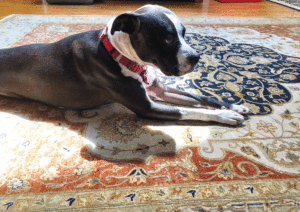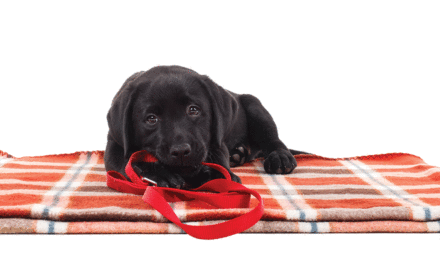
Fresh pet urine is acidic but once dried it turns alkaline, becoming harder to remove.
While operating Chem Dry Professional Carpet Cleaning, Vance Morris became intrigued with how to safely clean the oriental rugs he’d see in many clients’ homes. To that end, he and his Eastern Shore Rug Cleaning staff trained for TextilePro certification (one of two instructional courses for professional rug cleaning professionals created by Lisa Wagner who, along with her mother, operates San Diego Rug Cleaning. Wagner also authors a consumer-oriented educational blog rugchick.com.)
“We spent probably 6 to 8 weeks in classroom style coursework, learning about rug construction to understand weaving and dyes,” Morris said. The classes led up to a 3-day, hands-on training featuring a cornucopia of cleaning and treatment challenges. He said his team continues taking quarterly refresher instruction each year.
“While adding some mechanized equipment, the process (of cleaning) the rugs is, step by step, similar to the way they’ve been cared for in the native areas where they originate for the past 1,000 years,” Morris said. “Traditionally, these rugs would be placed directly on a dirt floor. To dust, they’d be hung up and whacked with a large stick, then taken to the river, immersed, and washed.”
The dusting and washing process take place locally at the Brooks Avenue plant in Easton.
It’s also possible to “dust” a smaller area rug at home by removing it to a garage, turning it over, covering with an old bed sheet, and vacuuming with the beater bar down, Morris added.
The fibers contain downward facing scales, which trap particles, preventing them from resurfacing, Morris said. Rugs may not appear dirty, but at that point, they are, he added. Though particles like sand and dirt might be too tiny to see, inside the pile their abrasive characteristics can prove destructive to fiber.
Fresh pet urine is acidic but once dried it turns alkaline, becoming harder to remove, Morris said. His plant uses a two-step treatment, first immersing the soiled rug in liquid to grab onto the urine molecules, then setting it in 2 to 3 inches of another solution to wash them away.
Popular over the counter cleaning products are too harsh, he feels, for hand woven natural fiber rugs. He instead suggests keeping handy an “emergency kit” of sorts to tackle fresh spots. Following a “less is more” approach Morris and his team employ gentle blotting rather than scrubbing, applying a tiny amount of a half water, half white vinegar solution, along with packing the spot in baking soda or cornstarch to draw out moisture, he added.
Overall, with proper care, “a wool rug will last for hundreds of years, a treasure which can be passed on to the next generation,” Morris said.





